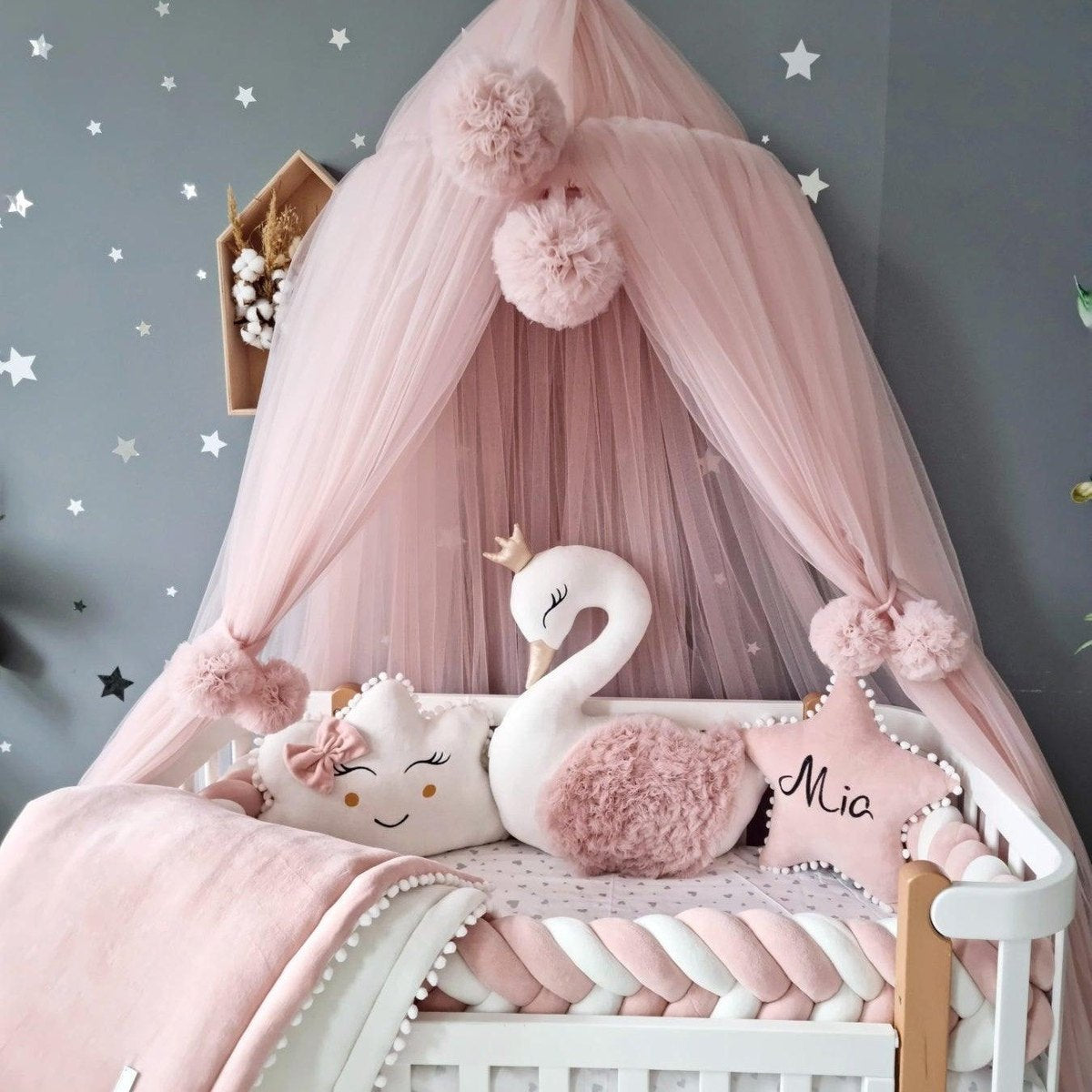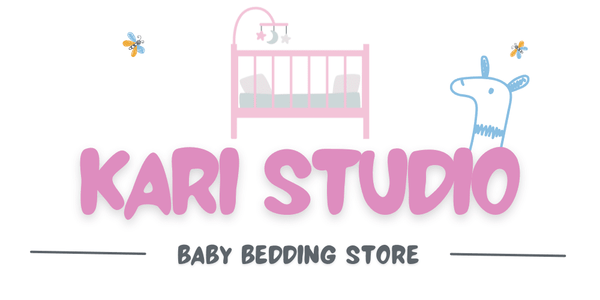Padres de todo el mundo se preocupan por cómo mantener a sus bebés seguros y cómodos por la noche, y los sacos de dormir están cambiando la forma en que duermen los bebés. Se podría esperar que la mayoría de los padres busquen mantas suaves, pero estas en realidad aumentan el riesgo de asfixia o sobrecalentamiento. La verdadera sorpresa es que usar un saco de dormir puede reducir tanto los peligros relacionados con el sueño que la Academia Americana de Pediatría los recomienda para un sueño más seguro y se han relacionado con un menor riesgo de síndrome de muerte súbita del lactante al eliminar la ropa de cama suelta .
Tabla de contenido
- Definición de sacos de dormir: qué son y para qué sirven
- La importancia de los sacos de dormir para la seguridad y comodidad de los bebés
- Cómo funcionan los sacos de dormir: explicación del diseño y la funcionalidad
- Características clave a tener en cuenta al elegir un saco de dormir
- Aplicaciones en el mundo real: Sacos de dormir en diferentes entornos
Resumen rápido
| Llevar | Explicación |
|---|---|
| Los sacos de dormir mejoran la seguridad del bebé. | Reducen los riesgos de asfixia al evitar que las mantas cubran el rostro durante el sueño. |
| Opte por materiales transpirables. | Tejidos como el algodón y el bambú favorecen la comodidad y la regulación de la temperatura, esenciales para el entorno de sueño del bebé. |
| Elija el tamaño adecuado para su seguridad. | Un saco de dormir bien ajustado permite el movimiento sin restricciones, favoreciendo un desarrollo saludable y la comodidad. |
| Establezca rutinas de sueño consistentes. | El uso de un saco de dormir ayuda a indicar la hora de acostarse, lo que fomenta la seguridad y reduce la ansiedad durante la transición del sueño en los bebés. |
| Versátil para diversos entornos. | Los sacos de dormir son beneficiosos en el hogar, en la guardería y durante los viajes, ya que brindan comodidad y seguridad familiares mientras están en movimiento. |
Definición de sacos de dormir: qué son y para qué sirven
Un saco de dormir es una manta especial, diseñada específicamente para bebés y niños pequeños, que proporciona una protección segura y cómoda durante el sueño. A diferencia de las mantas tradicionales, que pueden suponer un riesgo de asfixia, los sacos de dormir ofrecen una alternativa segura que ayuda a mantener una temperatura corporal adecuada y a mantener a los bebés cubiertos durante toda la noche.
El diseño esencial de los sacos de dormir
Los sacos de dormir suelen estar confeccionados con materiales suaves y transpirables como el algodón, el bambú o el forro polar, creando un ambiente envolvente que imita la reconfortante sensación de estar envuelto. Descubre más sobre las soluciones para el sueño infantil: estas innovadoras prendas presentan elementos de diseño clave que las distinguen de la ropa de cama tradicional:
- Aberturas en las sisas que permiten el libre movimiento de los brazos.
- Cierres con cremallera o botón para facilitar el cambio de pañales.
- Sección inferior espaciosa que permite el desarrollo natural de las piernas.
- Diferentes niveles de espesor para diferentes temperaturas estacionales
Propósito y beneficios de seguridad
Según una investigación de la Academia Americana de Pediatría , los sacos de dormir reducen significativamente los riesgos relacionados con el sueño infantil. Evitan que los bebés se tapen la cara accidentalmente con las mantas, lo que puede provocar sobrecalentamiento o asfixia.
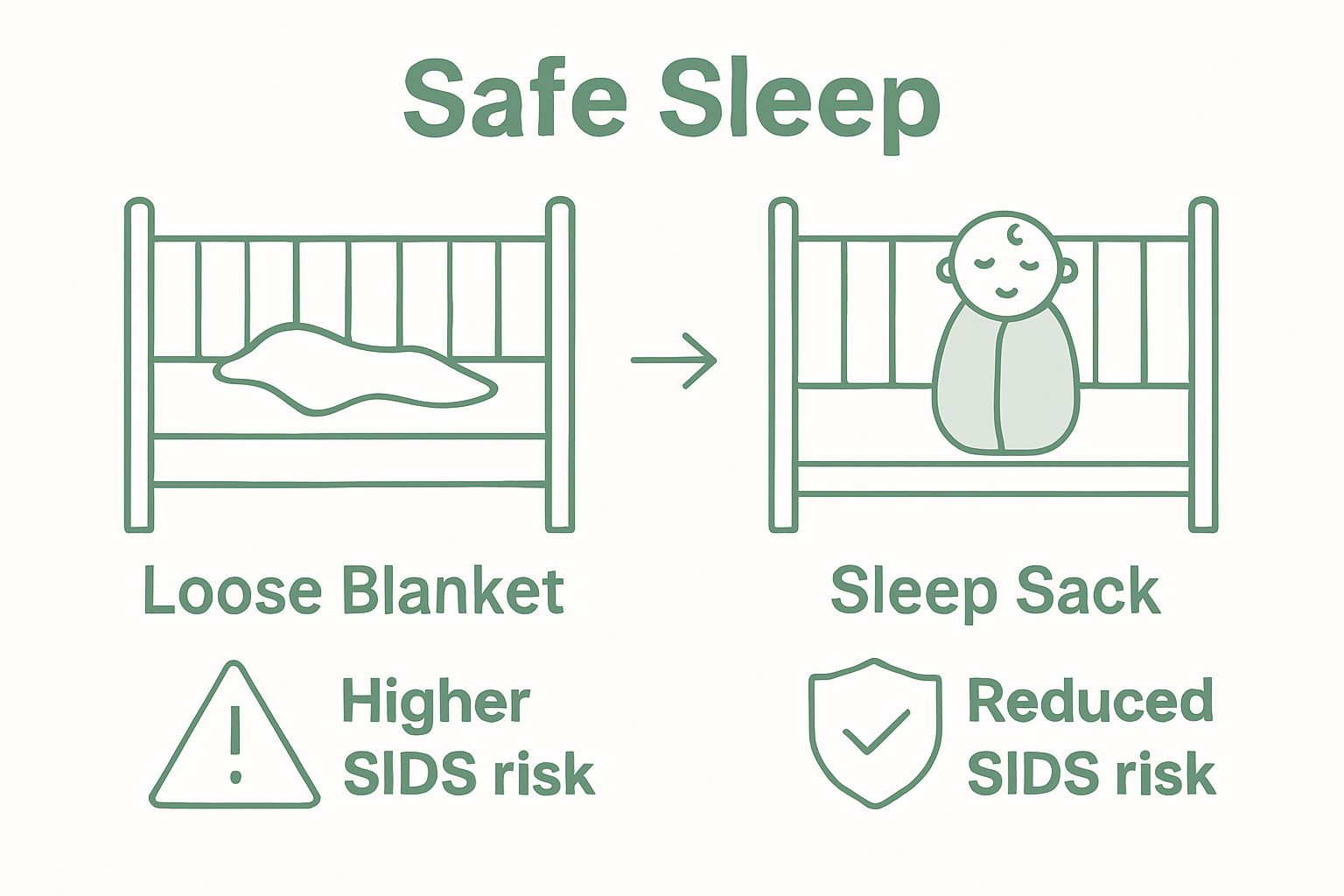 Al proporcionar un entorno de sueño controlado y constante, los sacos de dormir promueven prácticas de sueño más seguras y al mismo tiempo brindan tranquilidad a los padres.
Al proporcionar un entorno de sueño controlado y constante, los sacos de dormir promueven prácticas de sueño más seguras y al mismo tiempo brindan tranquilidad a los padres.
Las funciones principales de un saco de dormir van más allá de la simple calidez. Ayudan a regular la temperatura corporal del bebé, limitan los movimientos peligrosos de la manta y crean una rutina de sueño constante que indica la hora de dormir a los niños pequeños. Ya sea que se usen durante las noches más frescas de invierno o las más claras de verano, los sacos de dormir se adaptan a diversas condiciones ambientales, manteniendo la comodidad y seguridad del bebé.
A continuación se muestra una tabla de comparación de características que ilustra las diferencias clave entre los sacos de dormir y las mantas tradicionales para la seguridad y comodidad del sueño del bebé.
| Característica | Saco de dormir | Manta tradicional |
|---|---|---|
| Riesgo de asfixia | Elimina la ropa de cama suelta y reduce el riesgo de asfixia. | Más arriba, las mantas pueden cubrir la cara del bebé. |
| Regulación de la temperatura corporal | Diseñado para una calidez constante, evita el sobrecalentamiento. | Inconsistente, puede provocar sobrecalentamiento |
| Movilidad | Permite el libre movimiento de piernas y brazos. | Puede restringir el movimiento si está metido |
| Facilidad de uso | Cremalleras/botones para cambios rápidos | Debe plegarse y remeterse manualmente |
| Estabilidad durante el sueño | Permanece en su lugar durante toda la noche. | Puede moverse, amontonarse o aflojarse. |
| Recomendación de seguridad | Recomendado por pediatras (AAP) | No recomendado para bebés. |
La importancia de los sacos de dormir para la seguridad y comodidad de los bebés
Los sacos de dormir se han convertido en una herramienta fundamental en el cuidado infantil, ofreciendo un enfoque integral para crear entornos de sueño seguros y confortables. Comprender las recomendaciones para un sueño seguro resalta la importancia fundamental de crear condiciones de sueño seguras para los bebés, y los sacos de dormir desempeñan un papel fundamental para lograr este objetivo.
Reducir los riesgos para la salud relacionados con el sueño
La seguridad del sueño infantil es una preocupación compleja que va mucho más allá de la simple comodidad. Los profesionales médicos reconocen los sacos de dormir como una intervención estratégica para mitigar riesgos significativos para la salud. Las investigaciones indican que las mantas sueltas tradicionales pueden aumentar la probabilidad del síndrome de muerte súbita del lactante (SMSL) al crear posibles riesgos de asfixia. Los sacos de dormir eliminan estos riesgos al:
- Cómo evitar que se cubra la cara accidentalmente
- Mantener una temperatura corporal constante
- Restringir el movimiento incontrolado durante el sueño
- Proporcionar un entorno de sueño estable
Beneficios psicológicos y de desarrollo
Además de la seguridad física, los sacos de dormir contribuyen al bienestar psicológico y al desarrollo de los bebés. Su diseño cerrado, similar al del útero materno, genera una sensación de seguridad que puede mejorar significativamente la calidad del sueño. Estudios pediátricos sugieren que los bebés que usan sacos de dormir experimentan patrones de sueño más regulados, cruciales para el desarrollo neurológico.
La naturaleza predecible y cómoda de los sacos de dormir ayuda a establecer rutinas consistentes a la hora de acostarse.
Cuando los bebés asocian el saco de dormir con la hora de dormir, puede reducir la ansiedad y facilitar una transición más tranquila al descanso nocturno. Esta comodidad psicológica se traduce en periodos de sueño más largos y reparadores tanto para los bebés como para los padres, lo que favorece el bienestar general de la familia.
Cómo funcionan los sacos de dormir: explicación del diseño y la funcionalidad
Los sacos de dormir representan una solución ingeniosa para la ropa de cama infantil, meticulosamente diseñados para brindar seguridad y comodidad óptimas. Comprender las pautas para un sueño seguro revela los principios de diseño esenciales que hacen que estas mantas portátiles sean tan efectivas para el cuidado infantil.
Diseño y construcción anatómicos
La estructura fundamental de los sacos de dormir prioriza la movilidad del bebé y su protección fisiológica. A diferencia de las mantas tradicionales, estas prendas están confeccionadas con características estratégicas que abordan múltiples consideraciones de desarrollo y seguridad. Los sacos de dormir suelen estar confeccionados con una base ancha que permite el movimiento natural de caderas y piernas, evitando así la restricción del desarrollo físico y manteniendo una temperatura corporal constante.
Los elementos clave del diseño incluyen:
- Correas de hombro flexibles para un posicionamiento seguro
- Cierres con cremallera o botones para un fácil acceso.
- Paneles de tejido transpirable para regular la temperatura.
- Secciones inferiores espaciosas que favorecen la posición natural de las piernas.
Mecanismos de regulación térmica y confort
Los sacos de dormir funcionan como sofisticados sistemas de gestión térmica para bebés. La composición especializada de su tejido permite un control preciso de la temperatura, evitando el sobrecalentamiento o el enfriamiento excesivo. Investigaciones médicas indican que mantener una temperatura corporal constante es crucial para la calidad del sueño y la salud general del bebé.
Su construcción única crea un microclima alrededor del cuerpo del bebé, reteniendo el calor y permitiendo la circulación del aire. Esta regulación dinámica de la temperatura ayuda a los bebés a mantener una temperatura central estable durante las diferentes etapas del sueño, promoviendo entornos de sueño más tranquilos y seguros. Al eliminar las mantas sueltas y proporcionar una barrera térmica uniforme, los sacos de dormir minimizan eficazmente los riesgos relacionados con el sueño, garantizando la máxima comodidad para los niños pequeños.
Características clave a tener en cuenta al elegir un saco de dormir
Seleccionar el saco de dormir adecuado requiere considerar cuidadosamente múltiples factores que inciden directamente en la seguridad y la comodidad del bebé. Los consejos esenciales para elegir la ropa de cama para la cuna enfatizan la importancia de tomar decisiones informadas sobre los accesorios para dormir del bebé.
Selección de materiales y telas
La composición del tejido de un saco de dormir es fundamental para determinar su eficacia y comodidad. Los padres deben priorizar materiales que ofrezcan una transpirabilidad óptima, regulación de la temperatura y propiedades hipoalergénicas. Se recomiendan especialmente fibras naturales como el algodón y el bambú por su suavidad y capacidad para absorber la humedad.
Las consideraciones materiales clave incluyen:
- Opciones de telas orgánicas para minimizar la exposición a químicos
- Materiales ligeros para uso en verano.
- Tejidos térmicos para temporadas de invierno
- Textiles que absorben la humedad para evitar el sobrecalentamiento.
Especificaciones de tamaño y ajuste
Los sacos de dormir del tamaño adecuado son fundamentales para garantizar la seguridad y la movilidad del bebé. Un saco de dormir inadecuado puede comprometer la capacidad del bebé para moverse con naturalidad o crear una constricción innecesaria. Los expertos en pediatría recomiendan elegir sacos de dormir que permitan un movimiento sin restricciones de caderas y piernas, a la vez que se ajusten bien a la parte superior del cuerpo.
Los padres deben evaluar el tamaño del saco de dormir en función de:
- Peso y altura del bebé
- Características de diseño apropiadas para la edad
- Elementos de diseño ajustables
- Espacio para el crecimiento y movimiento natural.
Elegir el saco de dormir adecuado implica encontrar un equilibrio entre la seguridad, la comodidad y las necesidades de desarrollo. Al evaluar cuidadosamente la calidad del material, el tamaño y las características del diseño, los padres pueden seleccionar un saco de dormir que ofrezca una protección óptima y promueva patrones de sueño saludables para el bebé.
La siguiente tabla resume los factores importantes a tener en cuenta al momento de seleccionar un saco de dormir para garantizar la seguridad y comodidad del bebé.
| Consideración | Detalles |
|---|---|
| Material | Elija telas suaves y transpirables como el algodón o el bambú. |
| Talla y ajuste | El ajuste debe permitir el libre movimiento de la cadera y las piernas, y la parte superior del cuerpo debe quedar ceñida. |
| Estacionalidad/Espesor | Ligero para el verano, térmico para el invierno. |
| Tipo de cierre | Seleccione cremalleras o botones de fácil acceso para cambiar pañales. |
| Ajustabilidad | Busque características ajustables para adaptarse al crecimiento. |
| Propiedades hipoalergénicas | Opte por textiles orgánicos/naturales para reducir la irritación. |
Aplicaciones en el mundo real: Sacos de dormir en diferentes entornos
Los sacos de dormir han trascendido los entornos tradicionales de guarderías, demostrando su versatilidad en múltiples escenarios de cuidado. Explore nuestra guía de configuración de guarderías y descubra la importancia de soluciones integrales para el cuidado infantil que se adapten a diferentes contextos.
Entornos de hogar y guardería
En entornos residenciales y de cuidado infantil, los sacos de dormir son herramientas esenciales para mantener rutinas de sueño constantes. Las prácticas de sueño estandarizadas ayudan a los niños a sentirse seguros en diferentes contextos de cuidado, ya sea en casa o en guarderías profesionales. El envoltorio familiar de un saco de dormir proporciona comodidad psicológica, ayudando a los bebés a adaptarse a diferentes entornos con mínimas interrupciones.
Las aplicaciones clave en entornos domésticos e institucionales incluyen:
- Mantener una temperatura constante durante el sueño
- Facilitar cambios de pañales más fáciles
- Apoyando protocolos uniformes de seguridad del sueño
- Reducir la ansiedad durante las transiciones del sueño
Viajes y entornos móviles
Los sacos de dormir se convierten en accesorios indispensables para las familias en movimiento. Los padres que viajan con bebés pueden mantener la continuidad del sueño usando estas soluciones portátiles. Ya sea durante viajes por carretera, viajes en avión o estancias en diferentes lugares, los sacos de dormir proporcionan un entorno familiar para dormir que ayuda a los bebés a sentirse protegidos y cómodos.
Las ventajas específicas de cada viaje incluyen:
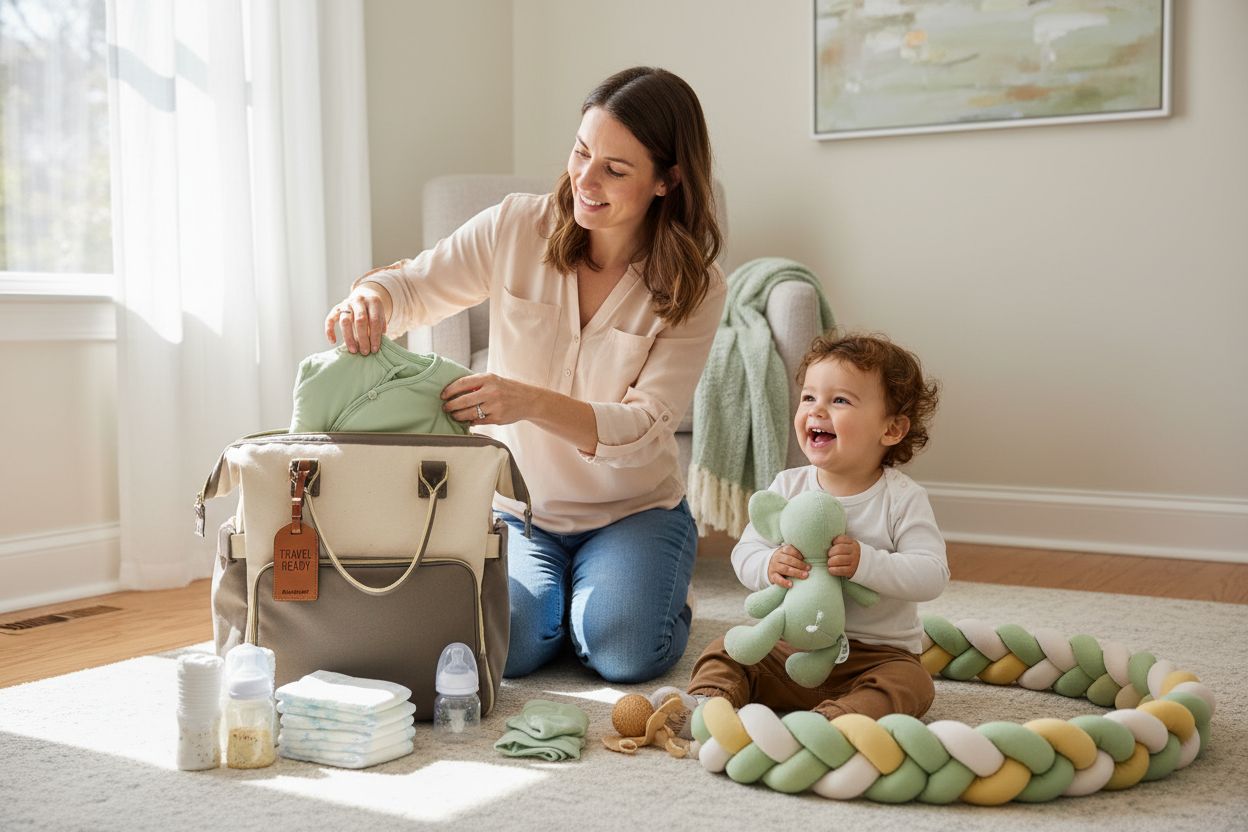
- Diseño compacto y ligero.
- Fácil lavado y secado rápido.
- Adaptable a diferentes temperaturas ambiente.
- Minimizar las interrupciones del sueño en espacios desconocidos
Al ofrecer una solución para dormir segura y consistente en distintos entornos, los sacos de dormir han revolucionado el cuidado infantil, proporcionando a los padres y cuidadores una herramienta versátil que favorece hábitos de sueño saludables y la comodidad del bebé.
Ofrécele a tu bebé el mejor santuario para dormir
Si le preocupa la seguridad y comodidad del sueño de su hijo, no está solo. El artículo destacó los peligros de las mantas sueltas, la tranquilidad que brindan los sacos de dormir y la importancia de un entorno de sueño seguro y acogedor. Muchos padres tienen dificultades para mantener a su bebé arropado de forma segura toda la noche, sin sacrificar la suavidad ni la calidez. Ahí es donde entran en juego las soluciones de Kari Studio .
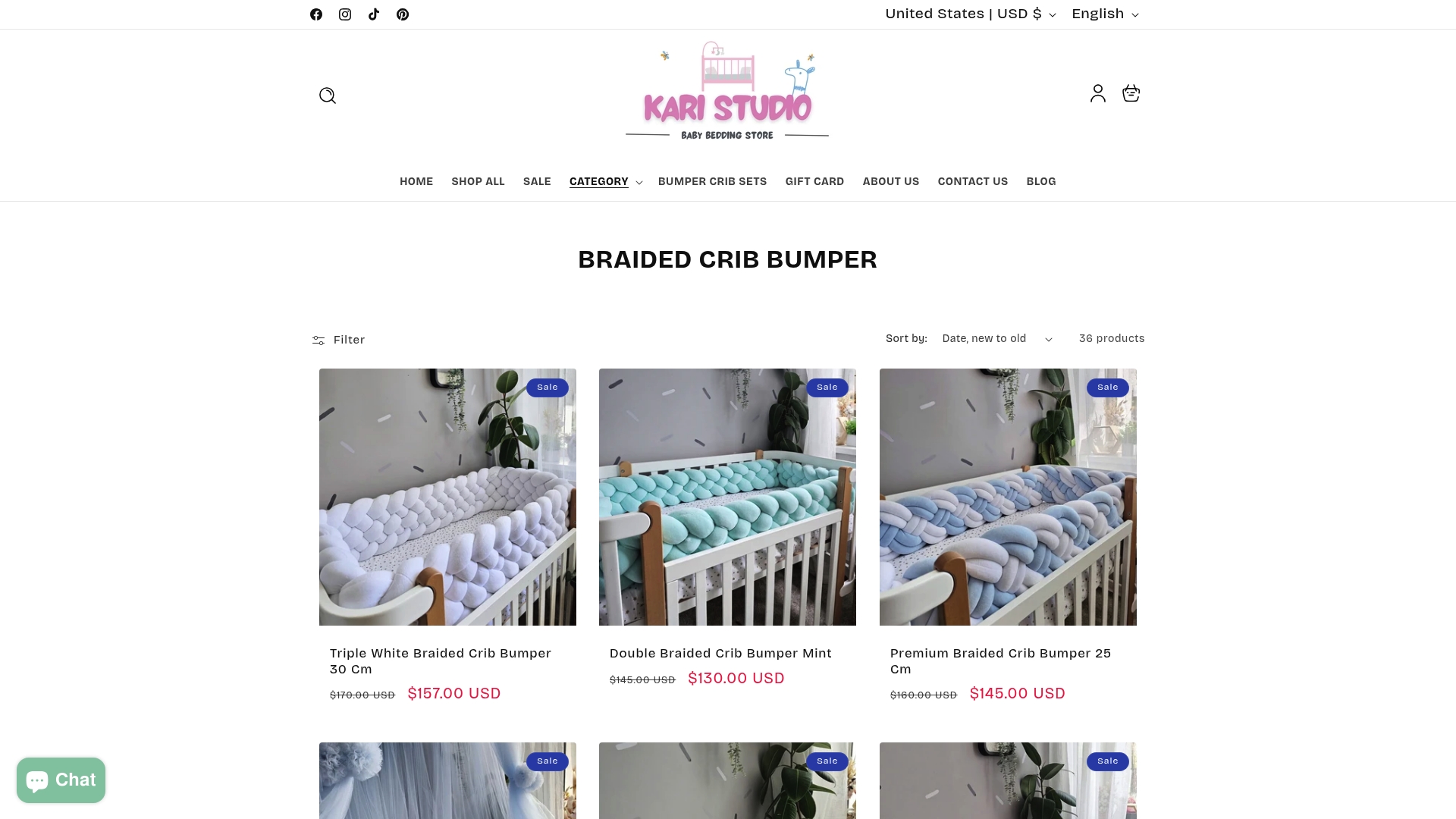
Puedes transformar la habitación de tu bebé en un refugio seguro combinando sacos de dormir con ropa de cama de alta calidad. Explora nuestra colección de protectores de cuna trenzados y descubre cómo nuestros productos de diseño y seguridad para bebés mantienen a los más pequeños abrigados durante toda la noche. Compra ahora para brindarle comodidad y protección a tu bebé, y experimenta la confianza que brinda elegir artículos esenciales para la habitación de tu bebé cuidadosamente diseñados. Da el siguiente paso para que tu bebé duerma lo mejor posible visitando hoy mismo nuestra gama completa de soluciones para la habitación de tu bebé.
Preguntas frecuentes
¿Cuál es el propósito de un saco de dormir?
Un saco de dormir proporciona un entorno seguro y cómodo para que los bebés duerman, a la vez que reduce el riesgo de asfixia asociado con las mantas tradicionales. Para garantizar que su bebé duerma seguro, considere usar un saco de dormir en lugar de ropa de cama suelta.
¿Cómo elijo el tamaño adecuado de saco de dormir para mi bebé?
Para elegir la talla adecuada, tenga en cuenta el peso y la altura de su bebé para asegurar un ajuste ceñido en la parte superior del cuerpo y permitir la libertad de movimiento de las piernas. Mida a su bebé y seleccione un saco de dormir que se adapte a sus dimensiones actuales y permita su crecimiento natural.
¿Qué materiales son los mejores para los sacos de dormir?
Los mejores materiales para sacos de dormir son telas suaves y transpirables como el algodón y el bambú, que promueven la comodidad y regulan la temperatura. Al elegir un saco de dormir, priorice estas telas para garantizar un ambiente acogedor y reducir el riesgo de sobrecalentamiento.
¿Cómo pueden los sacos de dormir ayudar con las rutinas de sueño de los bebés?
Los sacos de dormir pueden facilitar rutinas de sueño constantes, ya que proporcionan un entorno familiar y seguro que les indica a los bebés que es hora de dormir. Use un saco de dormir regularmente a la hora de dormir para ayudar a establecer una rutina relajante antes de dormir para su bebé.
¿Se pueden utilizar los sacos de dormir en diferentes climas?
Sí, los sacos de dormir se pueden diseñar para adaptarse a diferentes climas con distintos grosores para mantener a los bebés cómodos tanto en temperaturas cálidas como frías. Seleccione un saco de dormir adecuado para cada estación del año para garantizar que su bebé esté cómodo y seguro durante toda la noche.
¿Cómo mejoran los sacos de dormir la seguridad del bebé durante el sueño?
Los sacos de dormir mejoran la seguridad del bebé al evitar que las mantas sueltas le cubran la cara, lo que reduce el riesgo de asfixia y mantiene una temperatura corporal constante. Para mayor seguridad al dormir, utilice siempre un saco de dormir que se ajuste bien y mantenga la zona de descanso libre de objetos sueltos.
